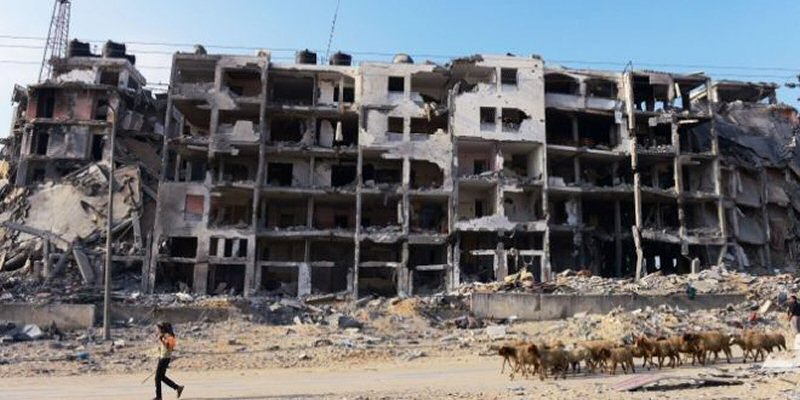A new report by the Palestinian Central Bureau of Statistics (PCBS) on the Levels of Living in Palestine in 2017, released on Sunday, noted that more than half the population in Gaza Strip were poor in 2017.
According to the report, the percentage of poverty was 13.9% in the West Bank, while it reached more than half of population in Gaza Strip as it was 53.0%, which means four times higher than poverty percentage in the West Bank, leaving around 29% of the Palestinians poor in 2017.
As for the deep poverty line, 5.8% of individuals were below the deep poverty line in the West Bank and 33.8% of individuals in Gaza Strip, so the deep poverty percentage in Gaza Strip was six times higher than the West Bank.
The report added that data showed an increase in poverty percentages in 2017 compared to 2011.
“The poverty percentages were 25.8% in 2011 while it increased by 13.2% in 2017 to reach 29.2% of individuals were below poverty line. Deep poverty percentages also increased in 2017, as it was 12.9% in 2011 and it increased to 16.8% in 2017 with an increase by 30.2%,” the report cited, according to the PNN.
According to the official PCBS website, this increase in percentages was mainly because of the sharp increase in poverty in the Gaza Strip.
“It is worth mentioning that the situation of level of living in Gaza Strip became worse than it was in 2011. Poverty among individuals in Gaza Strip was 38.8% in 2011 while it jumped to 53.0% in 2017 with 37% increase. In West Bank, the situation was different, as the poverty percentages decreased from 17.8% in 2011 to 13.9% in 2017 with about 22.0% decrease.
“Deep poverty percentages also increased significantly in Gaza Strip, as the deep poverty percentage was 21.1% in 2011 and became 33.8% in 2017 with an increase by around 60%. In West Bank, there was a decrease in deep means poverty percentages, as it was 7.8% in 2011 and became 5.8% in 2017 with a decrease by 25.6%.
“The significant increase in poverty indicators in Gaza Strip was the cause of the increase in poverty indicators on the national level,” the report added.
On a related note, the report said that the monthly average of per capita expenditure in Palestine was 169.5 JDs (220.1 JDs in the West Bank, and 91.2 JDs in Gaza Strip), showing an increase between 2011 – 2017, around 31% of which was spent on food (29.1% in the West Bank, and 35.7% in Gaza Strip), followed by the percentage of per capita expenditure on transport and communications by 18.5%, and 8.7% on housing, and the lowest percentage of expenditure was on recreation group by 1.5%, and second lowest percentage was on personal care group by 2.1% in Palestine.
The average monthly expenditure of household was around 935 JDs.
The change in expenditure patterns (either increasing or decreasing) in Palestine was the same for the West Bank and Gaza Strip in all groups except for the following three groups: Housing, Medical Care, Non consumption Expenditure.
The first group was housing, its share of expenditure decreased in the West Bank from 8.7% to 8.4%, while it increased in Gaza Strip from 8.9% to 9.8%, and remained the same on national level of 8.7% in 2017.
The second was the medical group, where its share decreased in the West Bank from 3.8% to 3.4%, while in Gaza Strip there was an increase from 3.3% to 4.0%, and on the national level the share of medical care decreased from 3.7% in 2011 to 3.5% in 2017.
The third group was the non consumption expenditure group, which includes: gifts, loans interests, social insurance; the share of this group increased in the West Bank, but decreased in Gaza Strip, and it increased on the national level from 5.2% in 2011 to 6.2% in 2017.
04/11/18 Israel’s Relentless Land Grabs: How Palestinians Resist

